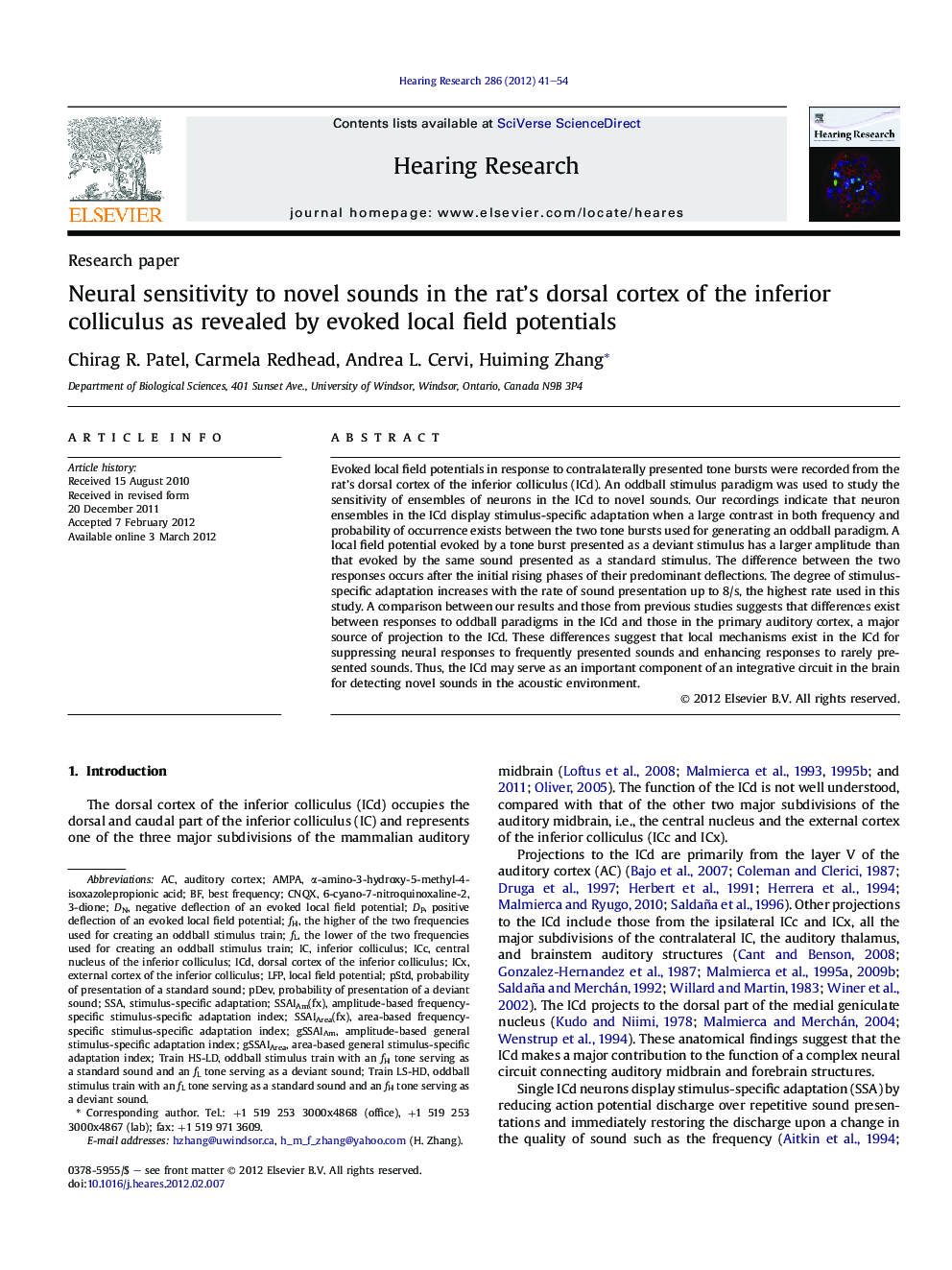| Article ID | Journal | Published Year | Pages | File Type |
|---|---|---|---|---|
| 4355388 | Hearing Research | 2012 | 14 Pages |
Evoked local field potentials in response to contralaterally presented tone bursts were recorded from the rat's dorsal cortex of the inferior colliculus (ICd). An oddball stimulus paradigm was used to study the sensitivity of ensembles of neurons in the ICd to novel sounds. Our recordings indicate that neuron ensembles in the ICd display stimulus-specific adaptation when a large contrast in both frequency and probability of occurrence exists between the two tone bursts used for generating an oddball paradigm. A local field potential evoked by a tone burst presented as a deviant stimulus has a larger amplitude than that evoked by the same sound presented as a standard stimulus. The difference between the two responses occurs after the initial rising phases of their predominant deflections. The degree of stimulus-specific adaptation increases with the rate of sound presentation up to 8/s, the highest rate used in this study. A comparison between our results and those from previous studies suggests that differences exist between responses to oddball paradigms in the ICd and those in the primary auditory cortex, a major source of projection to the ICd. These differences suggest that local mechanisms exist in the ICd for suppressing neural responses to frequently presented sounds and enhancing responses to rarely presented sounds. Thus, the ICd may serve as an important component of an integrative circuit in the brain for detecting novel sounds in the acoustic environment.
► Evoked LFPs in the ICd have a predominant deflection peaking at about 22 ms. ► Ensembles of ICd neurons display SSA in response to an oddball paradigm. ► Responses to standard and deviant sounds differ in amplitude after initial period.
